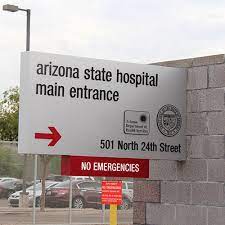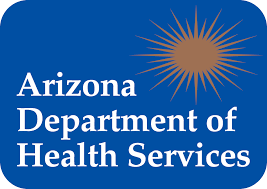The two-year effort to improve care at the Arizona State Hospital by building a more accountable and unconflicted governance structure went up in a puff of smoke this week. Senate Bill 1710 – which would have corrected major governance flaws that led to terrible unmitigated outcomes during the Ducey administration vaporized. More on how it happened in a bit.
AZPHA and other stakeholders interested in improving care at ADHS’ Arizona State Hospital have been trying to extricate ASH from the ADHS to remove the conflict of interest that impaired care during the Ducey administration. Rather than being housed within ADHS, the ASH Superintendent would have reported to an independent appointed governing board instead of the ADHS Director, removing the conflict of interest wherein the ADHS is responsible for both running and regulating ASH.
The lack of independent regulation & oversight of the Arizona State Hospital results in poor accountability and can lead to unchecked substandard care when the ADHS Director soft-pedals regulatory oversight to give the appearance that the facilities are providing care that meets standards.
There’s evidence that this occurred during the Ducey Administration. For example, ADHS’ licensing division investigated multiple suicides and a homicide over the last couple of years and concluded that no significant operating deficiencies led to those deaths and no enforcement actions were advanced. Suicides and homicides only occur in the presence of significant deficient practices that would normally result in enforcement actions.
See: Fixing the Governance Flaw at Our Arizona State Hospital: A Primer
Here’s what went down this week to stop this important governance and accountability reform.
As you’ll recall, SB1710 passed the Senate with wide bipartisan support with a vote of 27-2. The bill got unanimous support in the House Health Committee and passed the Rules Committee. That’s when things got sticky.
Last week, the Governor’s team started expressing ‘deep concern about the civil rights implications of the bill’ (I still don’t know what those civil rights concerns are). That, and the fact that ADHS had signed up against the bill, sent the message to the bill’s sponsor (Senator Gowan) that if SB1710 reached her desk she’d veto it (state agencies never oppose a bill unless directed to by a governor’s team).
I’m reading between the lines here… but I’m guessing at this point Senator Gowan was thinking “I wonder if I can get at least something out of the bill if I have it amended to become a completely different bill”. Along comes Representative Montenegro in the House Committee of the Whole on Monday with an amendment to SB1710 that strips out 100% of the language that built more accountability and governance. He then inserts language that would allow some physician assistants to help psychiatrists with certain kinds of assessments – something totally unrelated to the original bill.
The amended version – which does nothing to reform ASH or ADHS – then passes the full House on Tuesday, passes the Senate again in its new trivial form, and is sent to the governor for her certain signature. The title of the bill that she’ll be signing is still called SB1710 State Hospital; Governing Board; Governance… but the bill has absolutely NOTHING to do with the State Hospital or ADHS.
Editorial Note: As a result of the sad turn of events this week, the fox will continue to watch the henhouse. Under some administrations, the fox (the ADHS Director) can be trusted. In other administrations they absolutely cannot, as we observed during the Ducey administration. Whether we’ll be able to trust ADHS to honestly regulate ASH during this administration remains to be seen.
We won’t know the answer until ADHS finally has a permanent agency director and we observe how she or he behaves vis a vis their responsibilities to honestly regulate the Arizona State Hospital. In the mean-time, patients and their families will need to continue to wait for meaningful structural reform.



